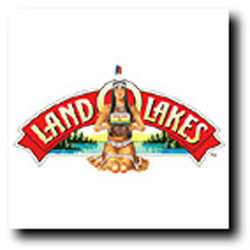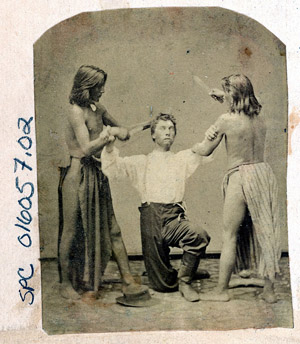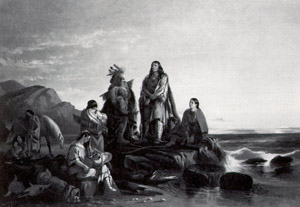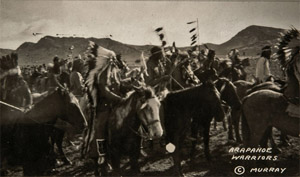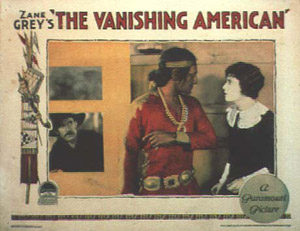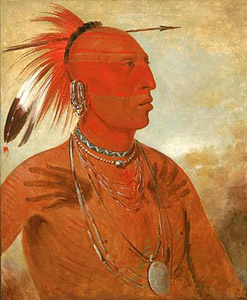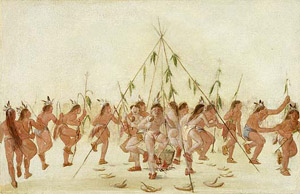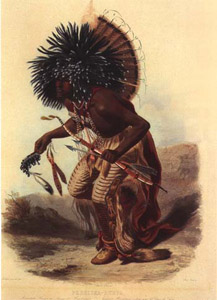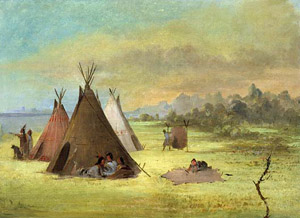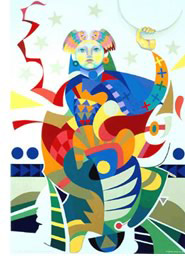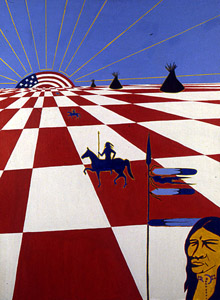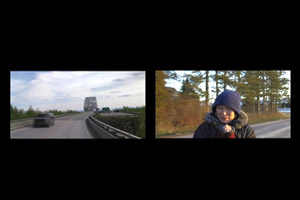
 |
 |
Manaugh Elementary School
[TITLE OF PROJECT]
| HOME |
| The "Us/Them" Idea |
| Exploring Orientalism in Art and Literature |
| Exploring American Indianism in Art and Literature |
| Similarities Between Tibetan and Navajo Cultures |
| Implications |
 |
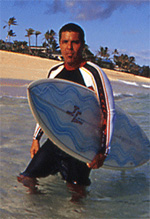 |
American Indianism: not found in any dictionary.
For the purpose of this website, let us use the phrase "American Indianism" to mean the academic and artistic tradition which promoted a deprecatory and hostile view of American Indians (Native Americans, Indigenous Peoples of the Americas) by Western Cultures.
Art Activity 1
*Students list their ideas, impressions of American Indians. Remind them to think of artwork, books, poetry, films, tv, or video games. (3 minutes)
*Students share their ideas, comments with a partner. Add any ideas they want to their own list. (3-5 minutes)
*Each pair of students join another pair to share/compare ideas. Group identifies their top 3 (arbitrary number - whatever you want it to be) ideas regarding Native Americans and lists them on chart paper/white board. (8-10 minutes)
*Review (briefly) the predominant ideas. Allow for questions and discussion. Raise the question of stereotypes if it doesn't arise.
Art Activity 2 - Gallery 1
*Hang a "gallery" of images (art, photography) depicting some aspect of American Indian culture. Include titles, artists' names, and dates of the works. (Below are some images you may use.)Give students a photo analysis worksheet to use while viewing the images, use the same one for artwork. Link to Analysis worksheet Allow 15 -30 minutes for students to view and record.
*If time allows, have students pair up and compare their thoughts. Otherwise, collect sheets and look through them before next class.
*Discuss each image and ask students for their comments, observations. Why might this photo/artwork promote a stereotype of American Indians?
-another possible assignment/activity-
*Ask students to think and then write about other stereotypes they are aware of and how the stereotype is promoted. (This may be an in-class assignment or homework, modify as needed. Here is a worksheet you may use.)
Land O Lakes Butter Logo |
Scalping Scene |
Last of Their Race - 1857 |
Movie Card - early 1900's |
Movie Card - 1926 |
La-wah-he-coots-la-shaw-no, Brave Chief, a Skidi (Wolf) Pawnee - 1832 |
Green Corn Dance -1835-1837 |
Moennitari Warrior in the Costume of the
|
Indian Encampment, Comanche, Dressing Skins, Red River - 1846-1848 |
Art Activity 3 - Gallery 2
*Hang another gallery of artwork by American Indian artists. Ask the students to consider the differences between the artwork in this gallery and the last one. As they view the pieces, the students write down questions, ideas, viewpoints,and impressions they have about or get from the artwork. (Here is a recording sheet for their thoughts.) (20-30 minutes)
*Allow for discussion time following the gallery, either in small groups or as a whole class.
Flying With Knowledge - Dana Tiger, Creek |
Benjamin Harjo Jr. |
Indian Landscape - Wayn Pushetonequa, Sac and Fox |
Wavoka - Jarrod Da, San Ildefonso Pueblo |
Mother Earth and Father Sky - Michael Cruz, Cayuga |
Binary Selves - Erica Lord Inupiaq/Athabaskan |
Art (+Writing) Activity 4
*Students choose one image from gallery 1 and one image from gallery 2 and compare/contrast them in writing. Ask students to focus on American Indianism and images American Indians create for themselves. (For 4th/5th graders I ask for at least two paragraphs, or a five paragraph essay from more advanced writers.)
--Additional Activities--
Reality TV and American Indians 2007
 |
1. View excerpts from Kid Nation Episode 12, "Where's Bonanza, Dude?"
www.bluecorncomics.com/2007/12/kid-nation-meets-indians.html
Begin Episode 1 at 5 min. and continue viewing with Episode 2 at 2 min.
2. Students discuss in small groups (or with a partner) and record observations from the episode, thoughts and ideas they have, as well as questions.
3. In a whole class session (or as a homework assignment) discuss the implications of the American Indians on Kid Nation and whether or not this is an example of American Indianism.
4. Students can write a paragraph or an essay on the role of the American Indian people in this episode of a popular TV show and the implications.
American Indians as Sports Mascots
1.Collect (either you or students) and examine sports teams mascots that utilize American Indians or Indian cultures. (Find some examples below)
2.Ask students to imagine the reaction of American Indians, and then have them research American Indians' reactions to the appropriation of their cultures for use in sports.
3. Students collect words and phrases (while researching) that they feel represent the feelings and opinions of some American Indian people. These words and phrases can be combined with one or more of the sports images in a piece of collage artwork.
 |
 |
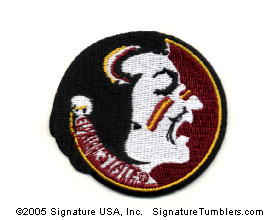 |
 |
4. Students can create a poster or image that protests the appropriation of American Indians and their cultures.
Below is one example.
 |
5. View In Whose Honor? A film that looks critically at the long standing practice of "honoring" American Indians as mascots and nicknames in sports. 47 minutes, by Jay Rosenstein www.newday.com/films/InWhoseHonor.html
Literature Activity 1
* In small groups, students will rotate through a series of quotes dealing with American Indianism, discuss their thoughts about the quotes, and respond to the quotes in writing. (Click here for American Indianism quotes.) You may format this activity in any way you like, here is one example for setting up the activity.
Literature Activity 2
*Print these pictures (or find your own) of American Indians from children's books. (Clicking on the picture will bring up a larger version)
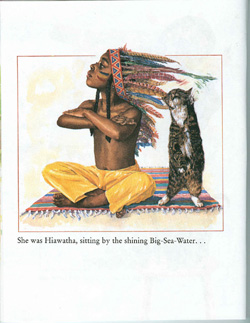 |
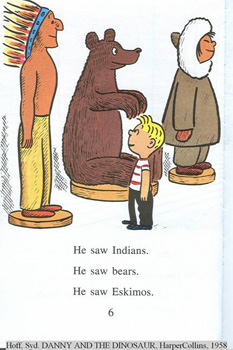 |
 |
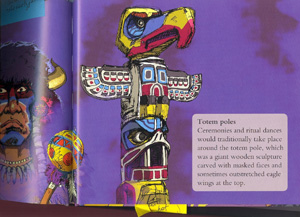 |
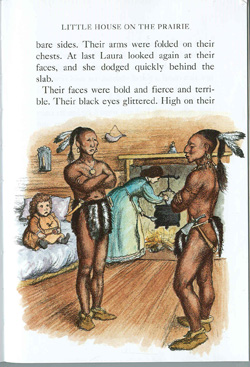 |
 |
Click Here for Web and Book Resource List
****Click for an Excellent Discussion/Critique of I Am Apache by Tanya Landman
****Click for an Excellent Discussion/Critique of AmazingIndian Children by Kenneth Thomasma
This site was created by Caitlin H. Munroe
at the NEH Summer Institute "Literatures, Religions, and Arts of the Himalayan Region," held at the College of the Holy Cross, Summer 2008.
